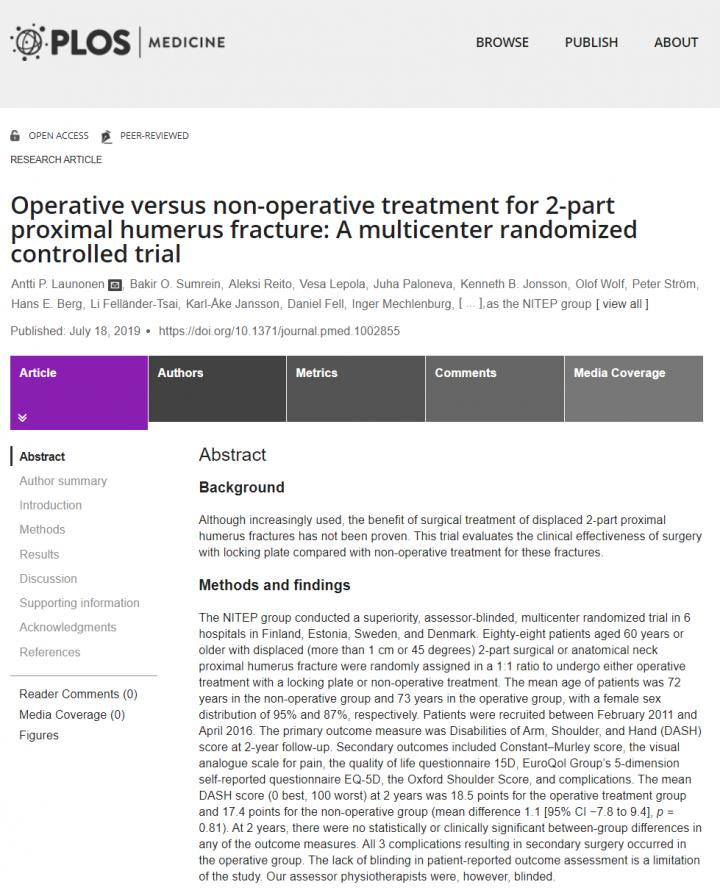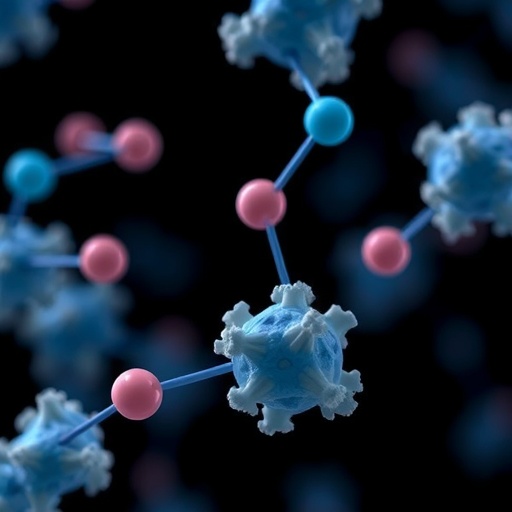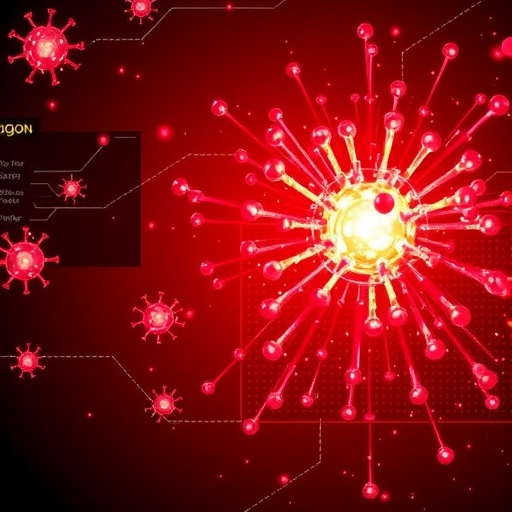
Credit: PLOS Medicine
The results of a recent Nordic collaboration study showed that there is no difference in functional results between operative and non-operative treatment in persons aged 60 or more with displaced proximal humerus fractures.
Proximal humerus fractures are more common in older persons than in younger adults. This fracture usually occurs as a result of falling, usually at home, directly on to the shoulder. In the proximal humerus, the bone is more fragile than lower in the forearm. The healing potential in the proximal humerus is, however, better than lower in the forearm.
In the study, published in Plos Medicine journal, only fractures with a significant displacement between bone fragments were included. Traditionally, humerus fractures have been operatively treated using a metal plate and screws. In the non-operative treatment group, patients used a collar and cuff sling for three weeks and underwent instructed physiotherapy.
The trial included 88 patients who were followed for two years, and was conducted as a multinational, multicenter study in six trauma centers.
The findings of the study are novel and challenge current treatment protocols. “Moreover the result had a positive impact on both the lives of the patients as well as on the economic cost of treatment,” says Aare Märtson, Professor in Orthopedics at the University of Tartu Institute of Clinical Medicine.
Abandoning those procedures that offer no benefit to the patient could result in savings of up to one million euros per year. Furthermore, patient recovery will be as successful as previously but without the surgery-related pain and complications.
The leading center was Tampere University Hospital, Finland. Other centers included Jyväskylä Central Hospital, Finland, Karolinska Hospital, Stockholm and Uppsala University Hospital from Sweden, Viborg Hospital from Denmark, and Tartu University Hospital from Estonia.
Next object for the NITEP study group is to assess whether older adults would benefit from surgery after distal radius fracture.
###
Media Contact
Aare Märtson
[email protected]




